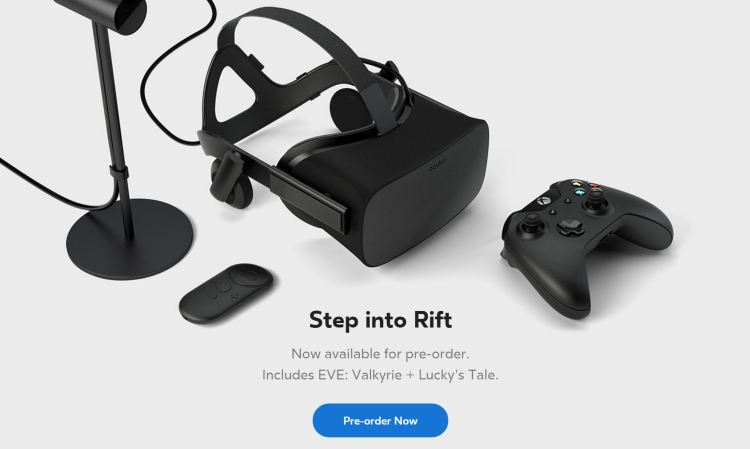You can finally buy an Oculus Rift, and a lot of people are doing exactly that. That has analysts weighing in on how the Rift might perform this year, and at least one expert thinks the device will catch on in a big way.
Between the price of $599 and the Rift selling out through the first two months (if you preorder the device now, it will ship in May instead of March), it’s hard to gauge exactly how well the virtual reality head-mounted display is going to sell in its first year on the market. That has analysts split on what to expect from Oculus Rift, even as tech adviser Digi-Capital continues to project a virtual and augmented reality market that will generate $150 billion in revenue by 2020.
“[Rift makes virtual reality] very viable,” Wedbush Securities analyst Michael Pachter told GamesBeat. “The price is much lower than I thought it would be. [Oculus] should sell 1 million Rifts this year at this price, and depending on content, it could sell a lot more.”
But not everyone agrees. In a note to investors, R.W. Baird analyst Colin Sebastian (who analyzes both Facebook and the gaming sector) explained that the price is on the “high end of expectations.”
“We note that the initial price point of $599 is at the higher end of expectations, although Facebook and Oculus have hinted in recent months that pricing might not target the mass market,” Sebastian wrote. “Moreover, since Oculus Rift requires a high-end compatible PC, most consumers would need to spend at least $1,500 for the headset and PC to run at full strength.”
That price will lead to a slow growth for high-end VR devices, according to the Baird analyst. But Sebastian also reiterates that the market will ramp up and begin to realize some of its potential in 2016.
“We continue to believe that mobile VR platforms — like Google Cardboard, Gear VR — will gain faster momentum, with expensive headsets initially limited to technology ‘early adopters,'” he wrote.
A $599 Rift is a tough sell for a lot of consumers. That’s because you can get an Xbox One or PlayStation 4 with some free games for around $350. And while the Rift does come with two games and an Xbox One controller, the comparison to other gaming platforms makes Rift appear overpriced. That’s despite Oculus founder Palmer Luckey claiming that his company is selling the device at cost.
But despite appearances or comparisons, $599 is a lot of money. And that has Sebastian looking ahead a year or two.
“[High-end VR will] not penetrate the mass market likely until 2017 or 2018 as price points fall below $400,” he said.
Now, we still don’t know how much competitors like the HTC Vive or PlayStation VR headsets will cost. If one of them (likely Sony) is able to hit $400, it could find more immediate success this year. Alternatively, Sebastian thinks a pre-holiday price drop for Rift could increase the device’s appeal before next year.
What’s clear is that the largest objection to VR, at this point, is cost. The demand among consumers is strong, but it’s potentially not enthusiastic enough to overcome the price barrier just yet.
VentureBeat's mission is to be a digital town square for technical decision-makers to gain knowledge about transformative enterprise technology and transact. Learn More

